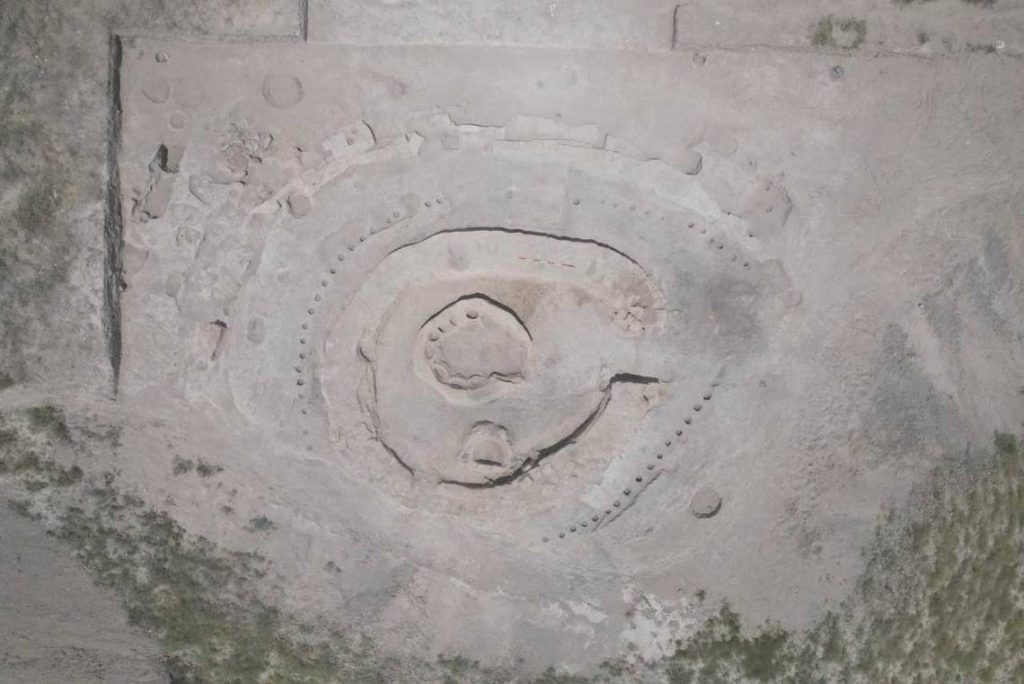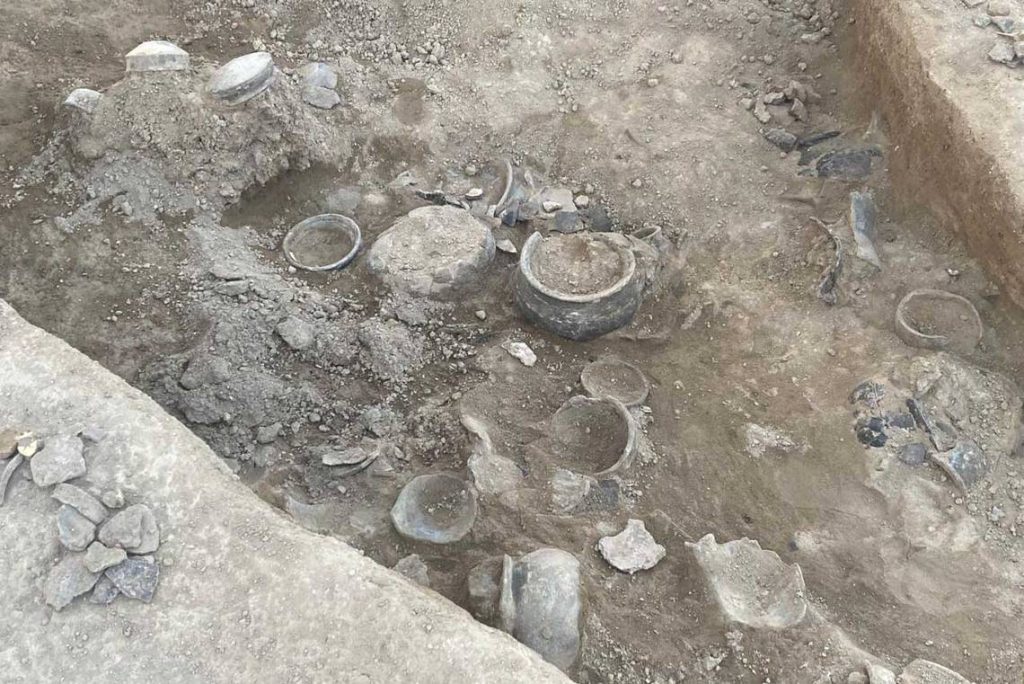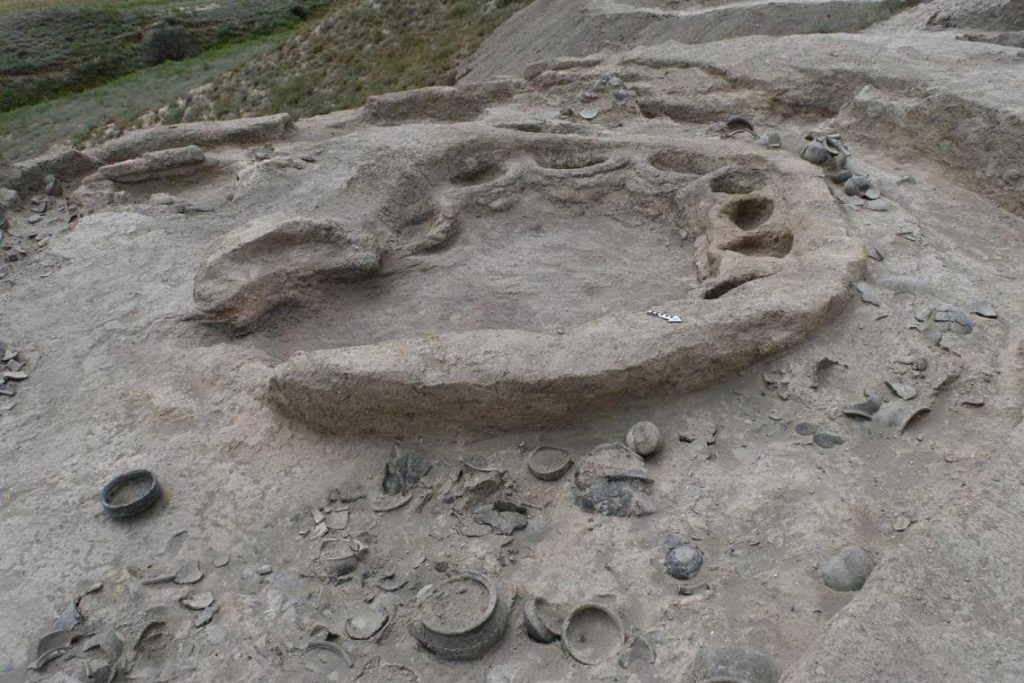
3500-year-old resting place used by nomadic peoples discovered in Azerbaijan
Azeri and Italian archaeologists have discovered a 3500-year-old rest stop used by nomadic peoples in Azerbaijan.
Working in the area known as Tava Tepe, near the border between Armenia, Georgia and Azerbaijan, the team found the remains of a rest stop.
According to the archaeologists, the monumental structure was used by nomadic communities moving between the Kura River basin and the Caucasus Mountains during the Late Bronze Age and Early Iron Age, probably between 1500 and 750 BC.

The discovery was announced in a press release issued by the University of Catania on July 7.
📣 Our WhatsApp channel is now LIVE! Stay up-to-date with the latest news and updates, just click here to follow us on WhatsApp and never miss a thing!!
The study team consists of Prof. Nicola Laneri of Ancient Near Eastern Archaeology and Art History at the University of Catania and archaeologists led by Bahtiyar Jalilov (Baku Academy of Sciences) at Tava Tepe in the Aghstafa region of western Azerbaijan.
The structure has a circular and possibly columned entrance. It is covered with reeds. In the center of the complex, which has a diameter of about 15 meters, eight oven-like structures, kitchen utensils, bowls and glasses were found.
Outside the central structure, a dumping area was uncovered. In addition to ceramic potsherds, a large number of animal bones (cattle, sheep and pig) were found.

There was also evidence that the resting area was used for ceremonial meals. Archaeologists uncovered an offering pit filled with human figures and broken pottery. The artifacts were buried in a thick layer of ash.
The remains from the kitchen and garbage area will provide new information about the food culture of the period.

The findings from Tava Tepe will be presented at a festival organized by the University of Catania in mid-July. The university will also host the international exhibition “From Babylon to Baghdad: In the Footsteps of Hammurabi” in December.
Cover photo: University of Catania
You may also like
- A 1700-year-old statue of Pan unearthed during the excavations at Polyeuktos in İstanbul
- The granary was found in the ancient city of Sebaste, founded by the first Roman emperor Augustus
- Donalar Kale Kapı Rock Tomb or Donalar Rock Tomb
- Theater emerges as works continue in ancient city of Perinthos
- Urartian King Argishti’s bronze shield revealed the name of an unknown country
- The religious center of Lycia, the ancient city of Letoon
- Who were the Luwians?
- A new study brings a fresh perspective on the Anatolian origin of the Indo-European languages
- Perhaps the oldest thermal treatment center in the world, which has been in continuous use for 2000 years -Basilica Therma Roman Bath or King’s Daughter-
- The largest synagogue of the ancient world, located in the ancient city of Sardis, is being restored











Leave a Reply